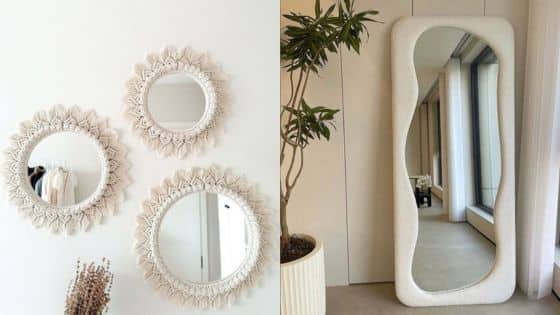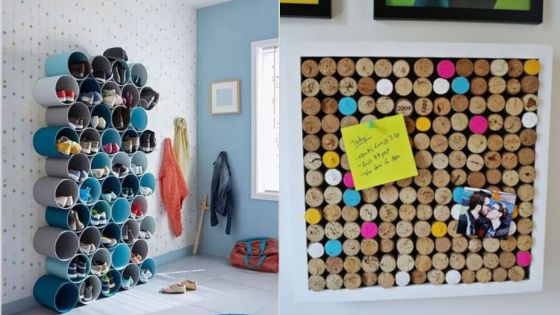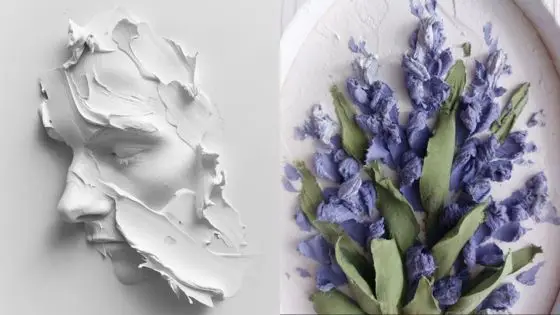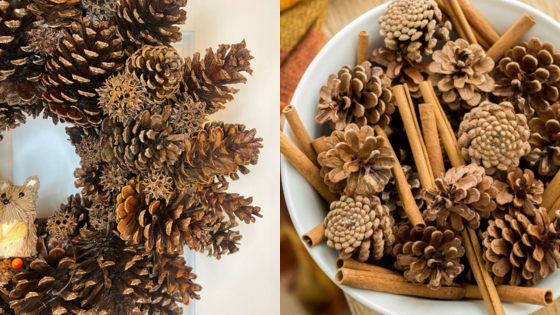Transforming your outdoor space doesn’t have to break the bank or require professional help. With simple DIY garden projects, you can create a beautiful, personalized garden that fits any space and budget. Whether you have a sprawling backyard, a compact balcony, or something in between, there are creative options that let you add character and function to your greenery.
From raised beds and unique planters to decorative features and upcycled accents, these projects help you connect with your space in a hands-on way. You’ll find easy ideas to refresh your garden, make it sustainable, and express your style—all while enjoying the process.

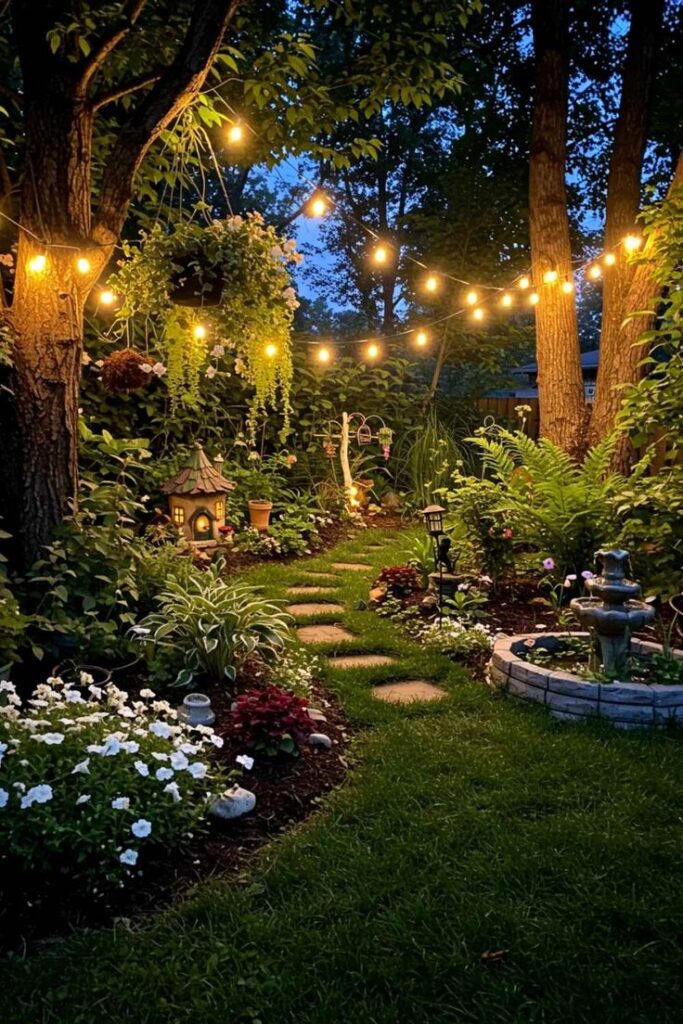
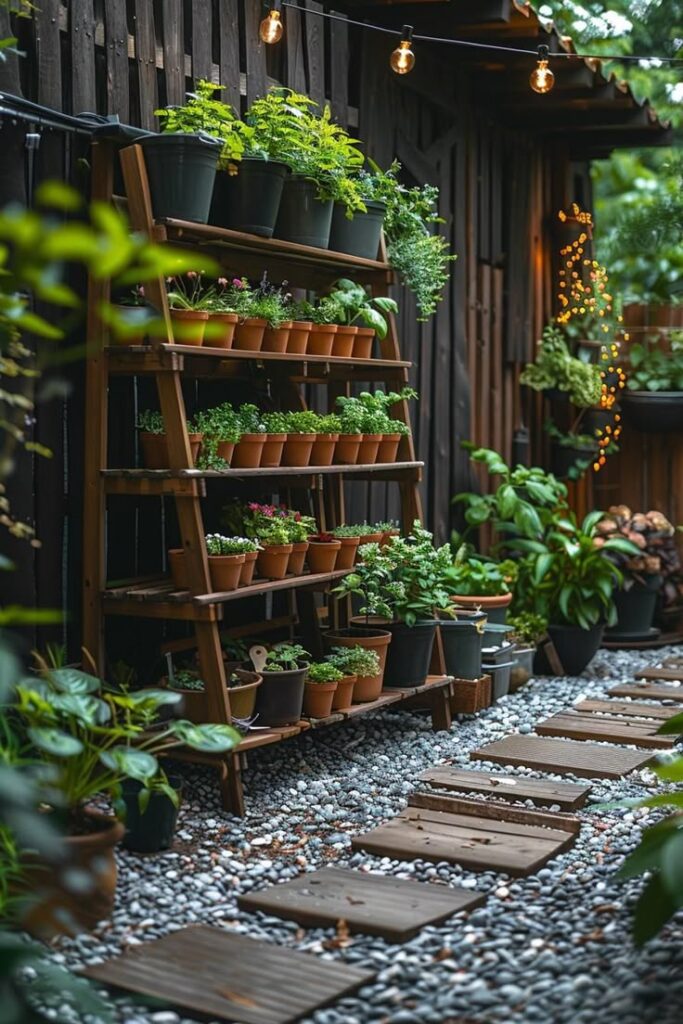
Key Takeaways
- DIY garden projects suit all spaces, from backyards to balconies.
- Creative and upcycled ideas help your garden stand out.
- Easy improvements can make your space more functional and inviting.
Essential DIY Garden Projects for Every Space
From building raised garden beds to starting a vertical pallet garden, you can easily maximize small or unused areas. Creating unique container gardens is a simple way to introduce greenery, even if you only have a patio or balcony.
Creative Raised Garden Beds
Raised garden beds are a classic DIY garden project that help you manage soil quality and improve drainage. You can build them with materials like untreated wood, galvanized metal, or stone. A raised bed keeps weeds at bay and makes gardening more comfortable by elevating the soil.
Consider creating tiered beds if you want multiple planting levels or have uneven terrain. Simple rectangular beds are ideal for beginners, but L-shaped or circular designs can help you make the most of awkward corners. Be sure to line the bottom with landscape fabric to block weeds.
To make assembly easier, use pre-cut lumber or kits. You can also add trellises for vining plants or hoops for row covers. Regularly refresh the soil mix with compost to keep your raised beds productive throughout the season.
Container Gardening Ideas
Container gardening is perfect if you have limited space or want to move plants around for optimal sunlight. Use planters, buckets, recycled crates, or even fabric grow bags to fit your style and budget. Reusing household items like old watering cans or pallets adds a creative touch to your container garden.
Group containers by plant type or size for easier watering and care. Drainage is essential, so make sure every pot has holes in the bottom. Mix ornamental flowers with herbs or vegetables for a colorful and productive display.
You can start a theme garden, such as a kitchen herb garden, by combining basil, mint, and chives in a single long planter. Switch out annuals throughout the year so your space stays fresh and vibrant.
| Container Type | Suggested Plants | Tips |
|---|---|---|
| Terracotta Pots | Herbs, succulents | Ensure good drainage |
| Wooden Crates | Lettuce, flowers | Line with plastic to prevent rot |
| Fabric Grow Bags | Tomatoes, potatoes | Lightweight and portable |
Vertical Garden Solutions
Vertical gardens allow you to grow more in less space by making use of walls, fences, or hanging systems. DIY vertical garden projects can include pallet gardens, shoe organizers, or stacked planters to display your plants vertically.
A pallet garden is especially simple—attach landscape fabric to the back and sides of a wooden pallet, then fill with soil and insert plants between the slats. Hang the pallet against a sunny wall for easy access.
Try hanging baskets, pocket planters, or creating a trellis system for climbing plants like peas or cucumbers. Herb pockets made from fabric or felt are great for balconies. Vertical gardens also make attractive privacy screens and can reduce ambient heat on patios.
Be mindful of watering; vertical gardens may dry out faster than ground-level gardens, so regular attention is needed. This project is ideal for urban spaces or where traditional gardening isn’t possible.
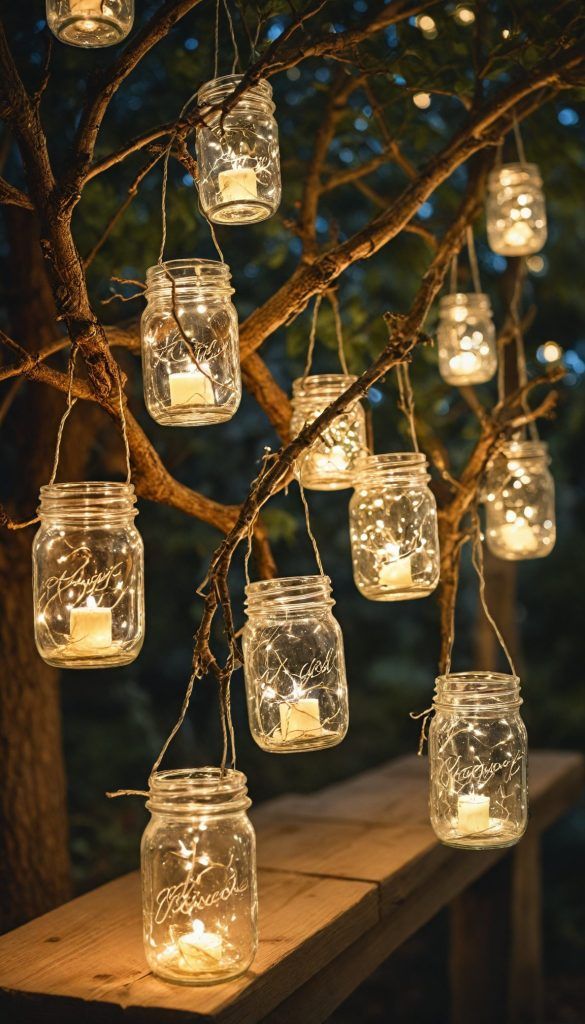
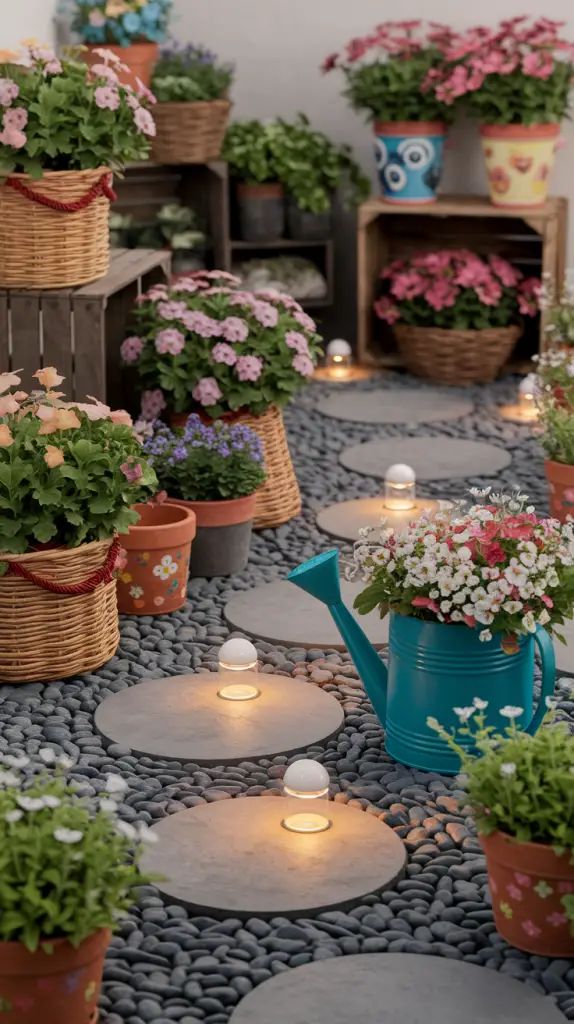
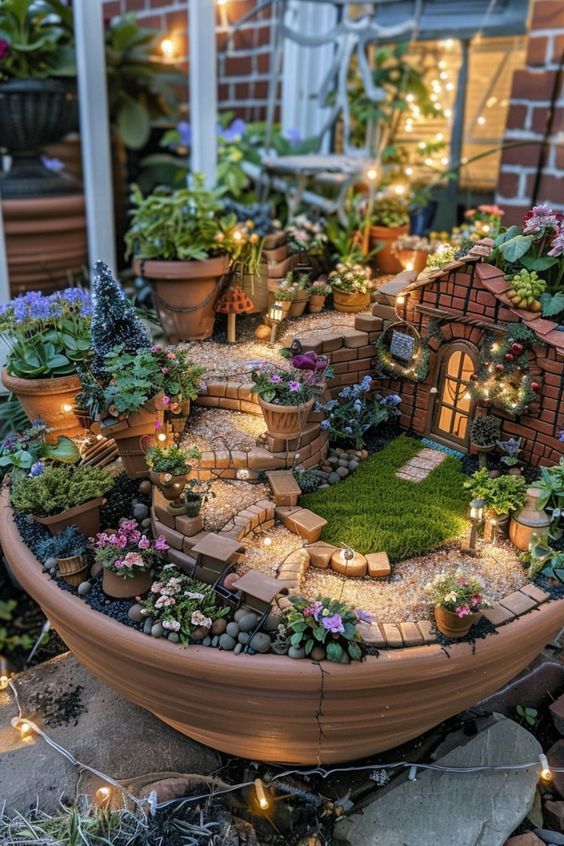
Small Space and Apartment Gardening
You can grow a surprising variety of plants in an apartment or on a balcony using clever techniques and compact containers. Maximizing vertical space, choosing the right planters, and experimenting with mini greenhouses let you successfully grow herbs, flowers, and even vegetables in tight quarters.
Hanging Basket Garden Inspiration
Hanging basket gardens are ideal when floor or counter space is limited. You can hang baskets from ceilings, sturdy hooks, or balcony railings to bring greenery to eye level. This setup is perfect for growing trailing plants, small flowering varieties, or leafy greens.
Popular choices for baskets include:
- English ivy
- Nasturtiums
- Strawberries
- Trailing herbs (like oregano and thyme)
A vertical herb garden made with stacked or tiered hanging baskets keeps your favorite kitchen herbs within reach and saves room. Using coco-lined and self-watering baskets can make plant care simpler and less messy indoors. Grouping baskets at different heights creates layers of color and texture without crowding your living space.
Window Box Planter Projects
Window box planters give you extra growing space right outside your window or along a bright sill. These rectangular containers are excellent for compact vegetable varieties, salad greens, and annual flowers. If you have a sunny window, you can grow cherry tomatoes, basil, chives, and lettuce almost year-round.
To get started, choose a well-draining box (wood, plastic, or metal with drainage holes), and use lightweight potting mix. For a low-maintenance setup, group plants with similar sunlight and water needs. Adding a water reservoir or drip system is helpful if you travel often.
Care tips:
- Water more often during hot spells
- Fertilize with a liquid feed every couple weeks
- Turn the planter every few days for even growth
Balcony and Mini Greenhouse Setups
A small balcony can become a true garden retreat with some strategic planning. Start with container gardens using pots, planters, and grow bags in various sizes. Organize pots on vertical shelves or plant stands to expand usable space.
For the most consistent results, consider a mini greenhouse. These compact enclosures protect delicate plants, herbs, or seedlings from wind, pests, and fluctuating temperatures. Look for kits with zippered covers and adjustable shelves that fit your balcony or patio.
Small greenhouses make it possible to extend your growing season, especially for tender crops or seedlings started early in spring. Prioritize easy-to-grow plants like lettuce, peppers, or compact cucumbers when you’re experimenting with limited space and a mini greenhouse setup.

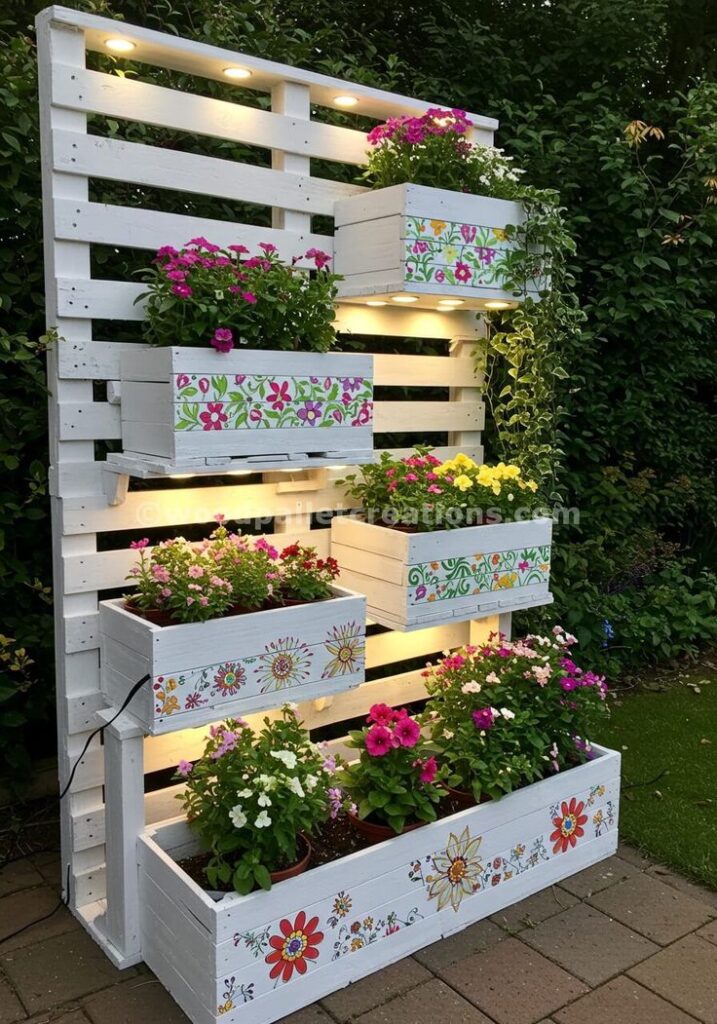
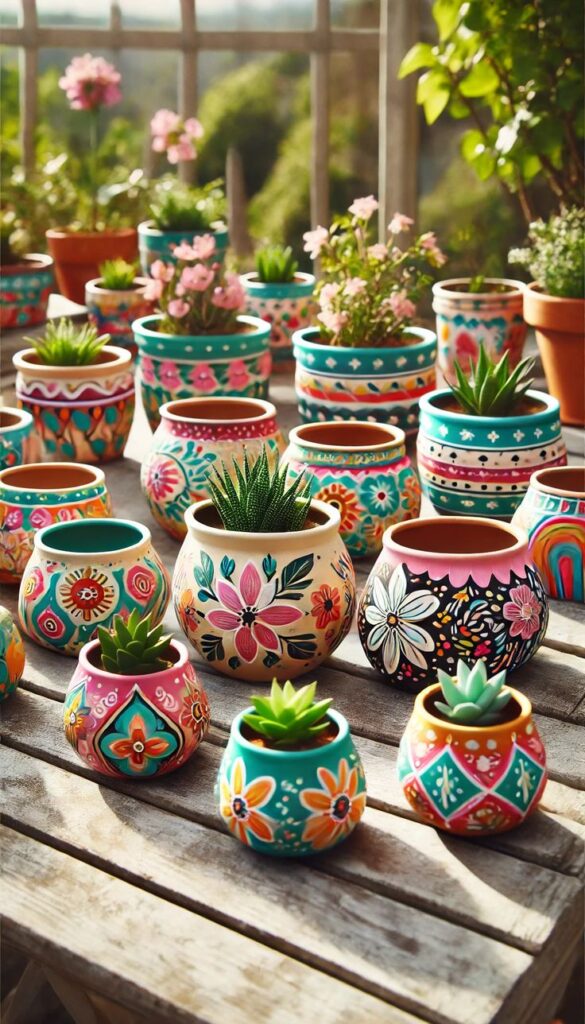
Themed and Specialty Gardens
Creating a unique garden space can add personality and function to your outdoor area. By choosing a specific theme, you can focus your efforts and make even small spaces come alive with purpose and style.
Building a Fairy Garden
A fairy garden is a whimsical miniature landscape that encourages creativity. You can use a variety of containers—like shallow pots, wooden boxes, or even old wheelbarrows—as the base. Add soil, small plants, and moss to create a lush background.
Look for tiny accessories such as miniature benches, houses, and bridges at craft stores or make your own from twigs and pebbles. Succulents, creeping thyme, and baby’s tears are popular plant choices because they stay compact and easy to shape.
Consider adding a small path out of flat stones or gravel for added charm.
Water your fairy garden lightly; most miniature plants do not need frequent watering. Place it where you can enjoy the whimsical scene—on a porch, a patio table, or under a shady tree. A fairy garden can be an ongoing project as you swap in new accessories and plants.
Designing a Succulent Garden
A succulent garden is ideal if you want low-maintenance yet visually striking plants. Choose a location that offers plenty of sunlight—most succulents need at least six hours a day.
Select a variety of succulents with different shapes, sizes, and colors. Use a well-draining soil mix to prevent root rot, especially important when planting in a container or succulent planter. Layering rocks or pebbles at the bottom of your container adds extra drainage and a polished look.
Arrange your succulents leaving room for growth, and water only when the soil is dry. Grouping together types like echeveria, jade, or haworthia creates visual interest. For contrast, mix upright and trailing varieties. Top the soil with decorative gravel or small stones.
You can display your succulent garden indoors near a sunny window or outdoors in a protected spot. Minimal upkeep is required—just occasional watering and occasional dusting of leaves.
Herb Garden Creations
An herb garden lets you grow fresh flavors within arm’s reach. Start by deciding if you prefer an in-ground bed, raised planter, or small containers on a windowsill.
Choose herbs you enjoy using most such as basil, thyme, mint, or oregano. Group similar water and sun needs together for healthier growth. It’s best to use a high-quality potting mix for containers, and ensure all pots have drainage holes.
Plant in clusters or rows, labeling each herb for easy identification. Regularly pinch back leaves to encourage bushier plants and better harvests. Water evenly but avoid soggy soil. With well-tended herbs, you can snip fresh leaves for meals or homemade teas nearly year-round.
Having an herb garden not only adds greenery but brings fresh aromas and flavors to your kitchen.
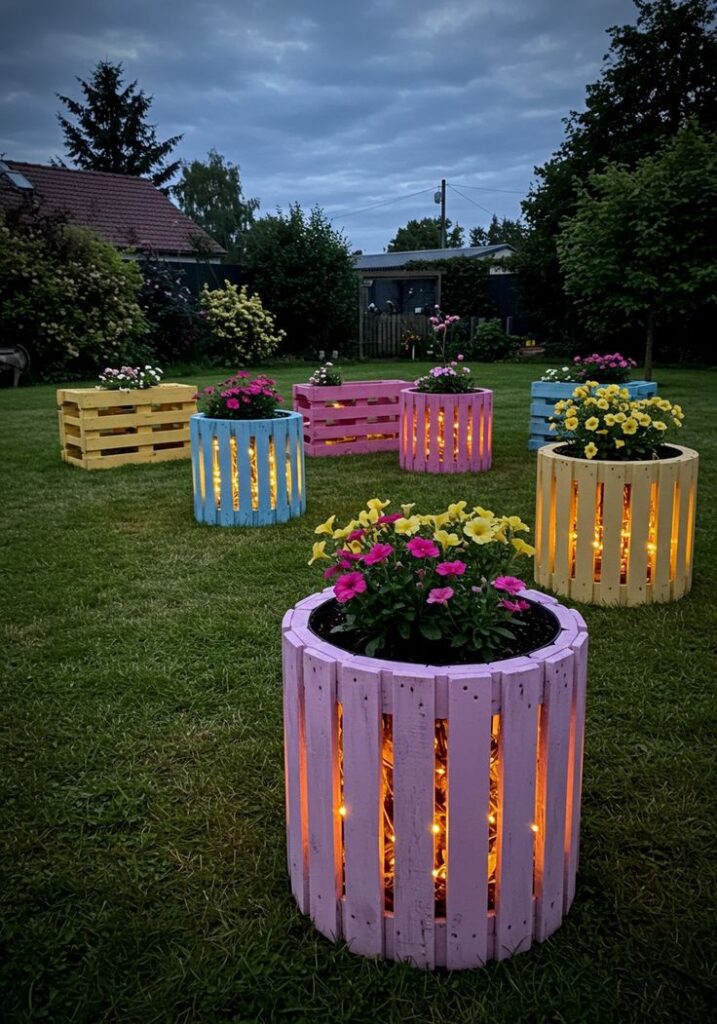
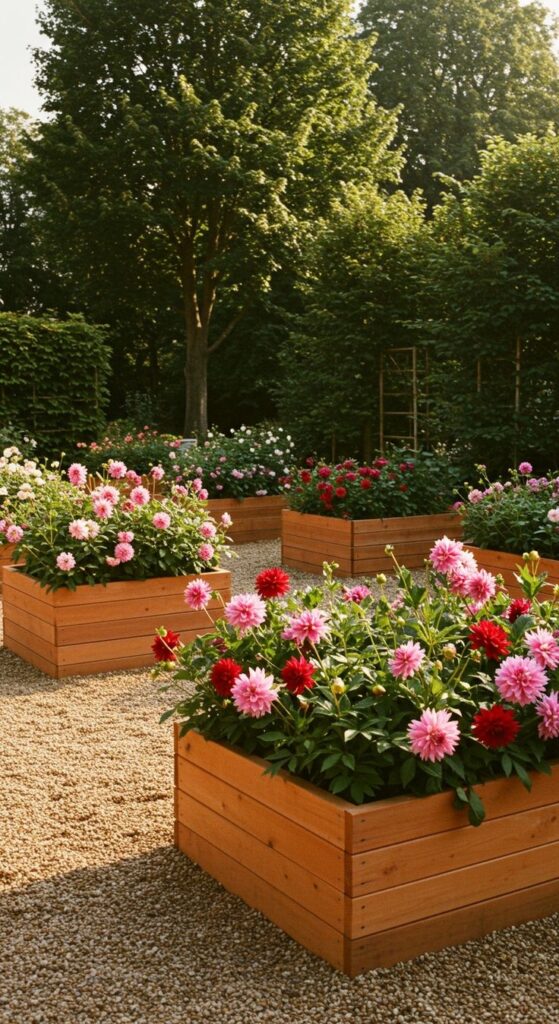
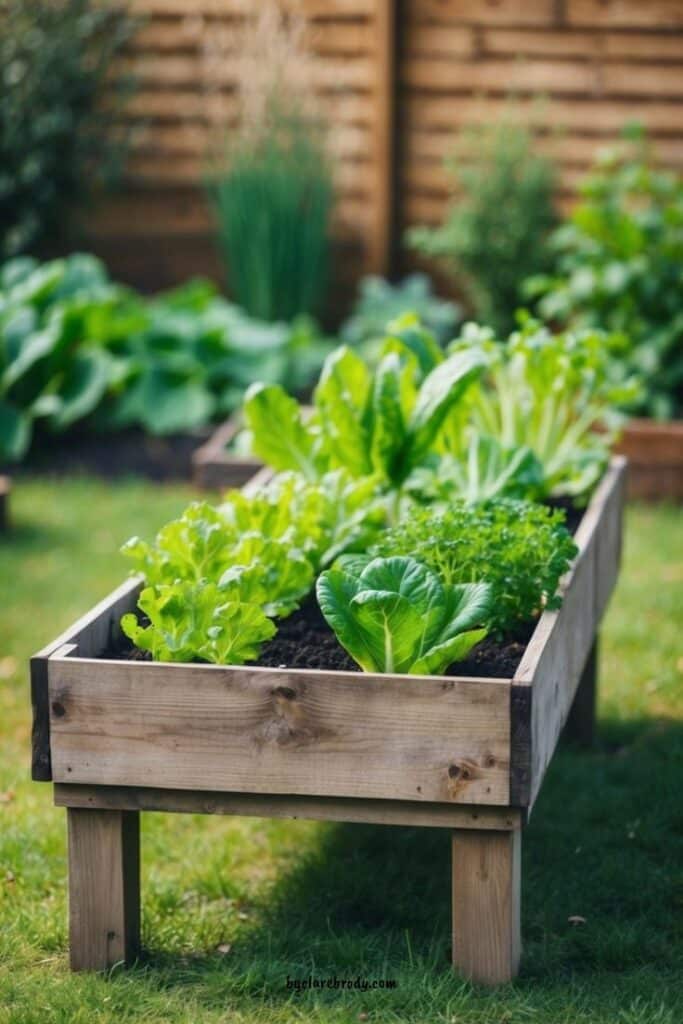
Sustainable and Upcycled Garden Projects
Creating a more eco-friendly garden starts with using what you already have. By transforming ordinary household items and collecting rainwater, you reduce waste and keep your gardening budget low.
Recycled and Upcycled Planters
You can turn old tires into creative tire planters with a splash of color. Pallets, wood crates, tin cans, and glass jars all make excellent upcycled materials for growing anything from herbs to flowers.
Start by lining a wooden pallet with garden fabric for a vertical planter. Stack and secure tires to build raised beds. Use cans or jars for small succulents or herb pots on fences or windowsills.
Table of Common Upcycled Planter Ideas
| Material | Garden Use | Extra Benefit |
|---|---|---|
| Tires | Large planters | Durable, weatherproof |
| Pallets | Herb gardens | Vertical space-saving |
| Tin cans/jars | Small pots | Easy to decorate |
| Buckets | Tomato plants | Portable |
Let your creativity show by painting or labeling your planters.
DIY Compost Bin Techniques
Composting helps you recycle kitchen scraps and garden waste into nutrient-rich soil. Building your own DIY compost bin keeps this process affordable and customizable.
A classic method is to reuse an old plastic barrel or storage bin. Drill small holes along the sides and bottom for airflow. Place the bin in a shaded spot, then layer green scraps (veggie peels, coffee grounds) with brown scraps (dead leaves, cardboard).
For larger gardens, wooden pallets work great. Use three to four standing pallets secured to form a box. This design provides plenty of air circulation and room to turn compost with a pitchfork. Always keep compost moist and turn it weekly to speed up decomposition.
Rain Barrel and Water Conservation Ideas
Collecting rainwater with a rain barrel helps water your plants while lowering your water bill. Pick a food-grade barrel with a tightly fitting lid to keep mosquitoes out.
Install a screen to filter leaves, then connect the barrel to your downspout. Attach a spigot near the base for easy bucket-filling. Use stored water for garden beds and container plants during dry spells.
You can camouflage the rain barrel with paint or attach lattice and vines for a natural look. Pair this with mulching to retain more moisture in your soil and create a water-smart garden.
Functional and Decorative Garden Features
Adding functional and decorative elements to your garden can transform your space into both a personal retreat and a practical, productive haven. With a few creative projects, you can introduce color, structure, and convenience to any outdoor area.
Creative Garden Art Ideas
Garden art lets you inject personality and charm into your landscape. Simple projects like painted stones, recycled metal sculptures, or mosaic tile window boxes can provide vibrant pops of color. Mosaic tile window boxes are especially eye-catching, blending artistic detail with a useful function for smaller plants and flowers.
Consider making garden mushrooms from upcycled materials or using driftwood, old tools, and glass bottles for sculptural displays. These projects bring whimsy without overwhelming the space.
Adding stepping stones painted by hand allows you to personalize paths. Hanging wind chimes or mirrors in trees reflects light and attracts attention to key features. Even small-scale art pieces can become conversation starters while enhancing your garden’s atmosphere.
Garden Benches and Potting Benches
A garden bench is both a comfortable resting spot and a feature that encourages you to spend extra time outdoors. With basic carpentry skills, you can assemble a sturdy wooden bench from lumber, or repurpose old chairs and pallets.
DIY potting benches are invaluable for gardeners who start seeds or repot plants. A potting bench provides a dedicated surface for gardening tasks, with shelves for soil, tools, and pots. Choose weather-resistant wood or metal for durability.
To make your setup practical, include hooks for hanging trowels, gloves, or hand pruners. Benches and potting benches not only serve as functional workstations and relaxation spots but also add rustic character and old-world charm to your yard.
Garden Markers and Trellis Projects
Clear, durable garden markers help you remember what you’ve planted and where, especially in vegetable plots and seedling trays. River rock markers, made by painting the names of herbs, flowers, or veggies on smooth stones, are weatherproof and easy to customize.
If you’re growing climbing plants, a garden trellis is essential. You can build a chevron lattice trellis using wood strips for peas, beans, and flowering vines. Trellises not only provide support but also lend vertical interest to your garden, saving space and improving plant health.
DIY trellises, whether wooden, metal, or even made with reclaimed branches, can double as attractive features when placed against fences or along garden paths.
DIY Fire Pit and Outdoor Structures
A DIY fire pit is a simple weekend project that can quickly become the centerpiece of your backyard. Choose natural stone, brick, or precast blocks, and select a safe, level location away from overhanging branches. A basic fire pit may involve digging a shallow ring and stacking stones in a sturdy circle.
Outdoor structures such as arbors, pergolas, or even a small gazebo offer shelter, frame your garden, and create defined spaces. You can use wooden beams or lattice panels for quick construction. Including built-in seating or planters adds both utility and beauty.
When planning these projects, always consider local safety codes and fire regulations to ensure your backyard is as safe as it is inviting.
Finishing Touches and Backyard Enhancements
Transform your outdoor space by focusing on details that boost first impressions, add soothing elements, and invite local wildlife. These straightforward projects help make your backyard feel more welcoming, enjoyable, and uniquely yours.
Adding Curb Appeal
Giving your garden or backyard some curb appeal doesn’t have to be complicated or expensive. Start by updating garden beds with fresh mulch, trimming overgrown plants, and arranging colorful flower pots along entryways or patios. Introducing a tidy border with bricks, stones, or recycled wood can create a clean and organized look.
Consider planting flower gardens near walkways or mailbox areas. Flower beds with seasonal blooms will brighten up the space, while low-maintenance perennials reduce year-round work. If you like edible landscaping, tuck in a small vegetable garden—raised beds or decorative containers work well even in smaller yards.
Add personality with DIY garden decor such as hand-painted signs or mosaic stepping stones. Repaint your fence or mailbox for a small, budget-friendly refresh. A few outdoor solar lights or lanterns can illuminate paths and make the yard safer at night. These touches not only enhance the appearance but also show care and attention to detail.
Backyard Water Features and Fountains
A backyard water feature offers sound, movement, and a peaceful focal point. You can make a DIY fountain using stacked pots, a small water pump, and waterproof sealant. Choose weather-resistant pots for container water gardens and fill them with aquatic plants like water lettuce or floating hyacinth for a low-maintenance setup.
If space is limited, a balcony or patio can support a small tabletop fountain. For larger yards, dig a shallow pond or use a preformed liner for an in-ground feature surrounded by flowering plants. Adding river rocks or pebbles around the edges gives a finished look and helps with water drainage.
Maintenance is important: keep water clean and remove debris regularly. Use a solar-powered pump for an eco-friendly solution and position your fountain where it’s visible from key outdoor seating areas. Water features deliver calming sounds and visual interest, making them popular DIY backyard ideas.
Bird Feeders and Wildlife-Friendly Ideas
Inviting birds and beneficial insects into your garden adds life and supports local biodiversity. You can make a simple DIY bird feeder from recycled materials like mason jars, teacups, or wood scraps. Hang feeders from sturdy branches or shepherd’s hooks near trees and shrubs for shelter.
Install a bird bath, ideally in a partly shaded area to keep the water cool. Change the water frequently to attract a wider range of species and avoid stagnation. To further benefit wildlife, plant native flowers and shrubs that provide nectar, seeds, or berries. Sunflowers and coneflowers are attractive and practical choices.
Leave parts of your garden untamed, letting a small brush pile or patch of wildflowers grow. This offers hiding spots and food for birds, bees, and butterflies. These DIY backyard ideas turn your space into a haven for wildlife while helping your garden flourish.
- 3shares
- Facebook0
- Pinterest0
- Twitter3
- Reddit0








